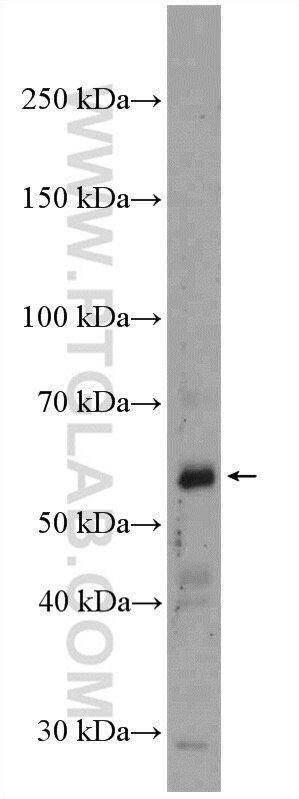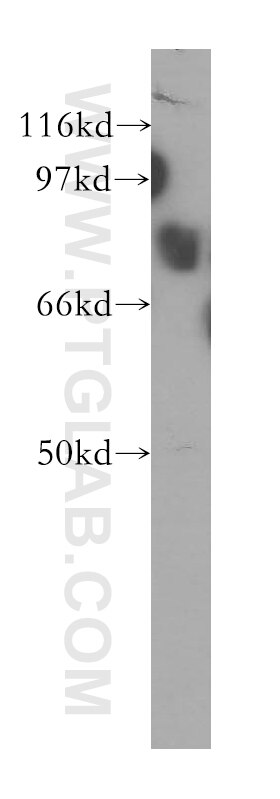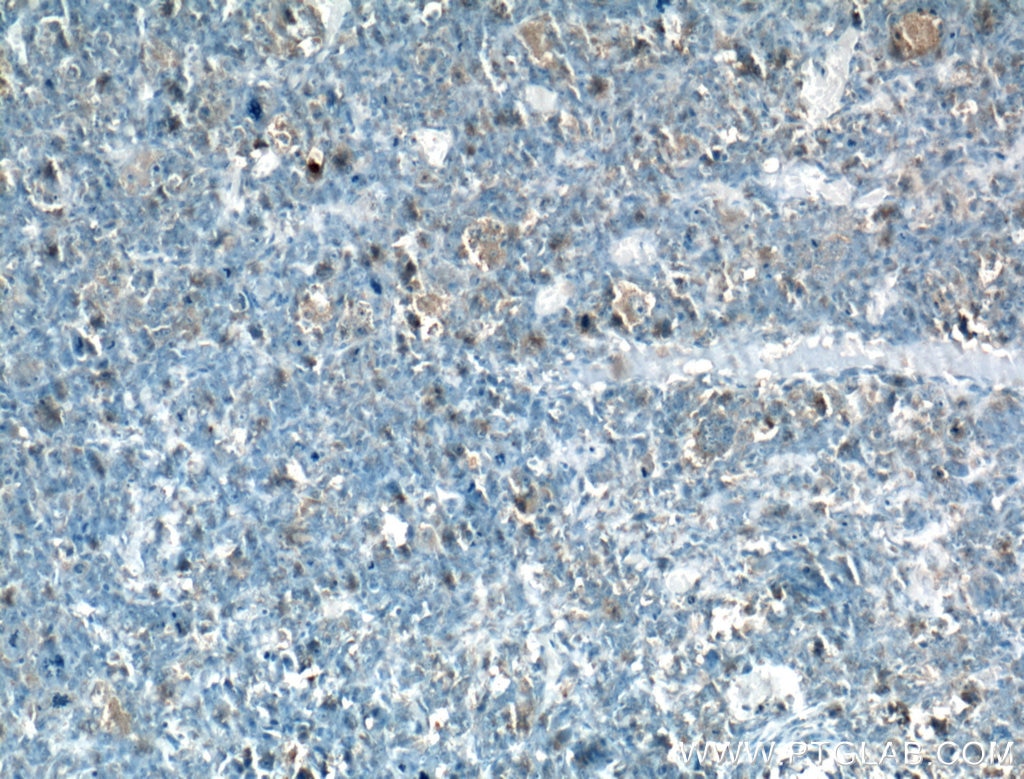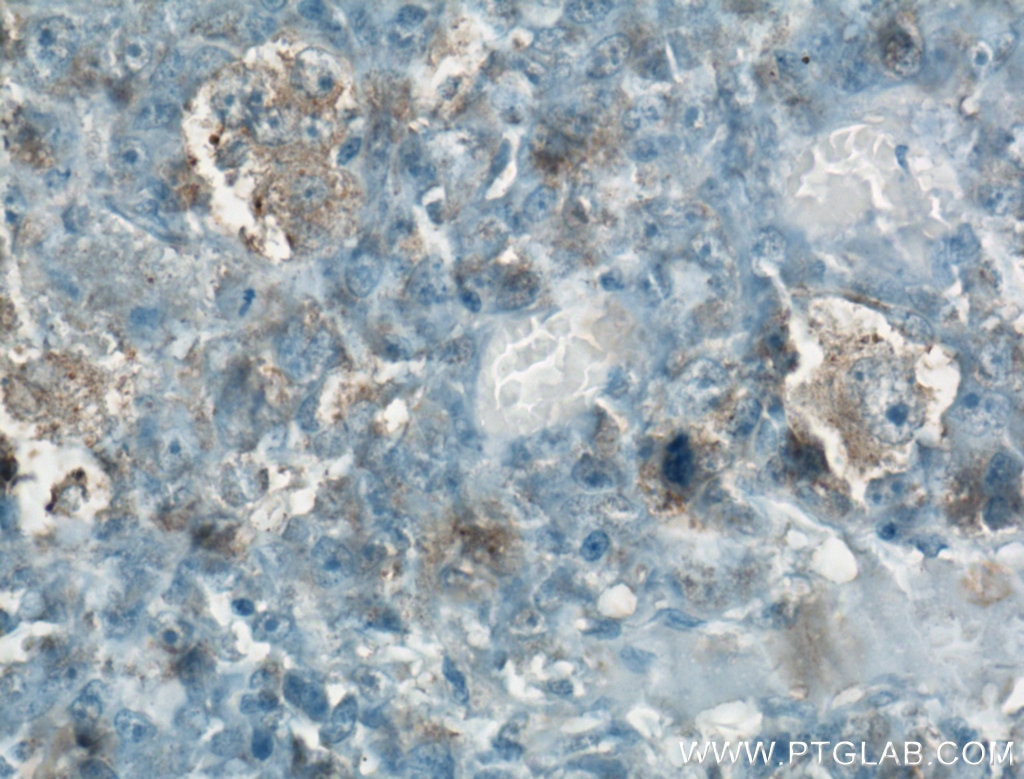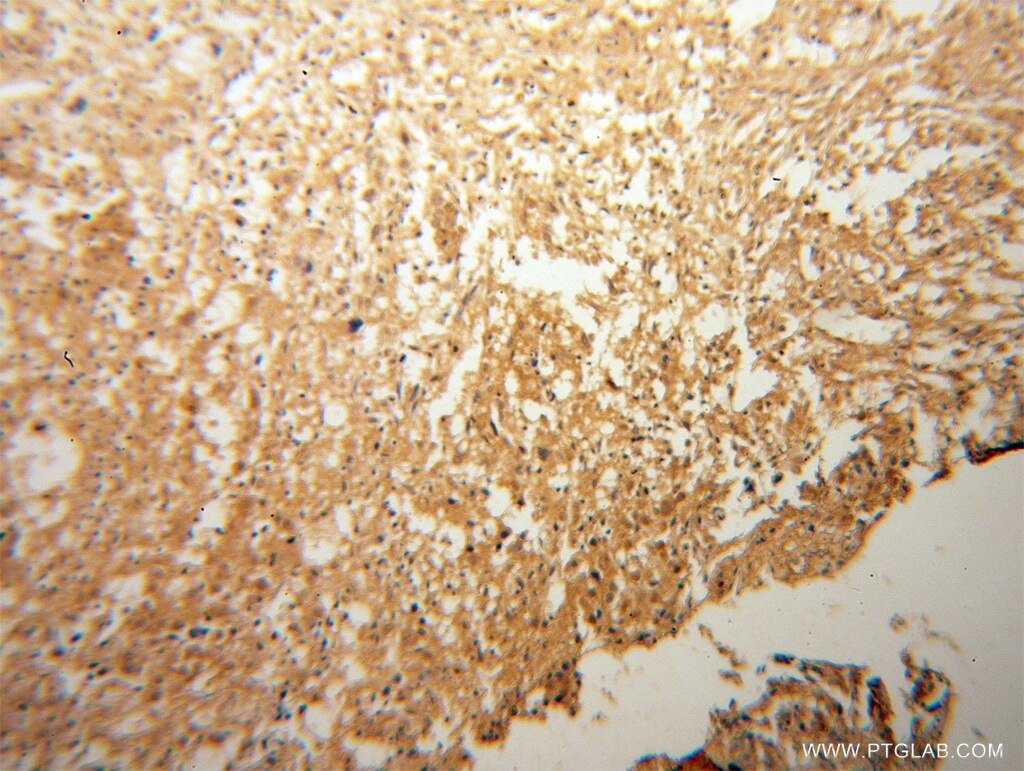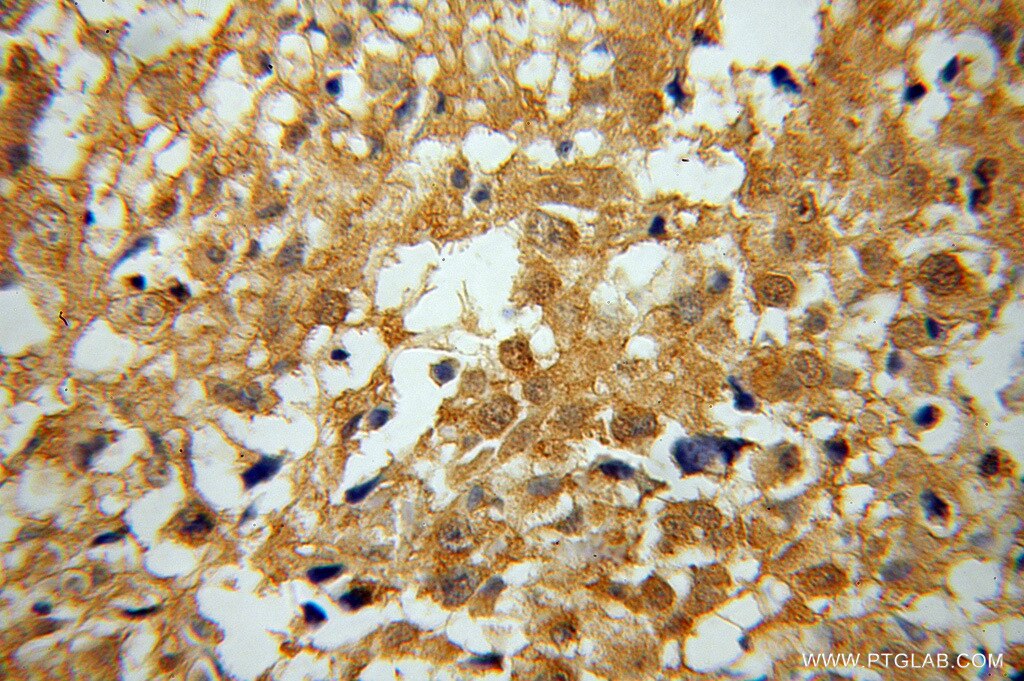COP1 Polyklonaler Antikörper
COP1 Polyklonal Antikörper für WB, IHC, ELISA
Wirt / Isotyp
Kaninchen / IgG
Getestete Reaktivität
human, Maus, Ratte
Anwendung
WB, IHC, ELISA
Konjugation
Unkonjugiert
Kat-Nr. : 13542-1-AP
Synonyme
Galerie der Validierungsdaten
Geprüfte Anwendungen
| Erfolgreiche Detektion in WB | humanes Herzgewebe, Mausherzgewebe |
| Erfolgreiche Detektion in IHC | humanes Osteosarkomgewebe Hinweis: Antigendemaskierung mit TE-Puffer pH 9,0 empfohlen. (*) Wahlweise kann die Antigendemaskierung auch mit Citratpuffer pH 6,0 erfolgen. |
Empfohlene Verdünnung
| Anwendung | Verdünnung |
|---|---|
| Western Blot (WB) | WB : 1:500-1:1000 |
| Immunhistochemie (IHC) | IHC : 1:50-1:500 |
| It is recommended that this reagent should be titrated in each testing system to obtain optimal results. | |
| Sample-dependent, check data in validation data gallery | |
Veröffentlichte Anwendungen
| KD/KO | See 1 publications below |
| WB | See 1 publications below |
Produktinformation
13542-1-AP bindet in WB, IHC, ELISA COP1 und zeigt Reaktivität mit human, Maus, Ratten
| Getestete Reaktivität | human, Maus, Ratte |
| In Publikationen genannte Reaktivität | human |
| Wirt / Isotyp | Kaninchen / IgG |
| Klonalität | Polyklonal |
| Typ | Antikörper |
| Immunogen | COP1 fusion protein Ag4484 |
| Vollständiger Name | ring finger and WD repeat domain 2 |
| Berechnetes Molekulargewicht | 731 aa, 80 kDa |
| Beobachtetes Molekulargewicht | 90 kDa |
| GenBank-Zugangsnummer | BC039723 |
| Gene symbol | COP1 |
| Gene ID (NCBI) | 64326 |
| Konjugation | Unkonjugiert |
| Form | Liquid |
| Reinigungsmethode | Antigen-Affinitätsreinigung |
| Lagerungspuffer | PBS mit 0.02% Natriumazid und 50% Glycerin pH 7.3. |
| Lagerungsbedingungen | Bei -20°C lagern. Nach dem Versand ein Jahr lang stabil Aliquotieren ist bei -20oC Lagerung nicht notwendig. 20ul Größen enthalten 0,1% BSA. |
Hintergrundinformationen
COP1 is also named as RFWD2, RNF200 and belongs to the COP1 family. It is a ubiquitin ligase that targets key regulators for degradation, and DET1 complexes with COP10 and DDB1, which is proposed to aid in COP1-mediated degradation (PMID:22705257). The endogenous COP1 is localized predominantly in the nucleus, but small amount may also be present in the cytosol. Within the nucleus, COP1 is present in both the nucleoplasm (NP) and the nuclear envelope (NE) fractions, although COP1 is more enriched in the nucleoplasm (PMID:12466024). Two of the COP1 isoforms identified by RNA-seq analysis predicted the size of two proteins detected by the antibody for COP1, a 75 kDa band, corresponding to the longer isoform, and a 50 kDa band corresponding to the shorter isoform. (PMID:24714719). It has been shown that COP1 forms dimerization through its coiled-coil region.
Publikationen
| Species | Application | Title |
|---|---|---|
Cancer Lett Primate-specific miR-944 activates p53-dependent tumor suppression in human colorectal cancers.
|
